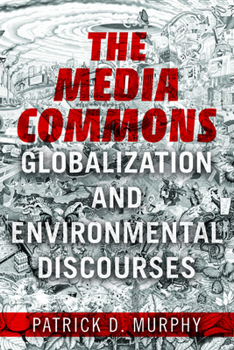The Media Commons: Globalization and Environmental Discourses
(Part of the The Geopolitics of Information Series)
Today's global media sustains a potent new environmental consciousness. Paradoxically, it also serves as a far-reaching platform that promotes the unsustainable consumption ravaging our planet. Patrick Murphy musters theory, fieldwork, and empirical research to map how the media communicates today's many distinct, competing, and even antagonistic environmental discourses. The media draws the cultural boundaries of our environmental imagination--and influences just who benefits. Murphy's analysis emphasizes social context, institutional alignments, and commercial media's ways of rendering discussion. He identifies and examines key terms, phrases, and metaphors as well as the ways consumers are presented with ideas like agency and the place of nature. What emerges is the link between pervasive messaging and an environment conjured by our media-saturated social imagination. As the author shows, today's complex, integrated media networks shape, frame, and deliver many of our underlying ideas about the environment. Increasingly--and ominously--individuals and communities experience these ideas not only in the developed world but in the increasingly consumption-oriented Global South.
Format:Paperback
Language:English
ISBN:0252082532
ISBN13:9780252082535
Release Date:March 2017
Publisher:University of Illinois Press
Length:208 Pages
Weight:0.71 lbs.
Dimensions:0.6" x 5.9" x 8.9"
Customer Reviews
0 rating





